The following article was produced in participation with the Partners in Preservation program, which will be awarding $3 million in grants to historic sites across New York City based on your votes – so go vote now!
This is probably the most well-known crab in New York.
For years, he and his three twins have been diligently holding up New York City’s oldest outdoor manmade object, Cleopatra’s Needle, found in Central Park – one of my favorite pieces of art anywhere, and currently in competition for a Partners of Preservation grant for its restoration.
Originally constructed in approximately 1450 BC (making it over 3,400 years old), Cleopatra’s Needle was installed in Central Park on February 22, 1881…
…and overall, very little has changed since.
But I think one of the reasons I love visiting Cleopatra’s Needle is because of how incredible it is to think that this…
…was once this (painting by artist David Roberts, dated to about 1846-1849):
Pictured above (in what I imagine was a slightly fanciful rendering) are the twin Cleopatra’s Needles in Alexandria, Egypt: New York’s is upright; its pair, now in London, is toppled over. Below, a photograph taken sometime between 1856 and 1860:
Despite the name, the obelisks were in fact over 1,000 years old by the time of Cleopatra’s reign. They were actually commissioned by Pharaoh Thutmosis III to be erected in Heliopolis in celebration of the 30th year of his reign. Each obelisk was made from red granite quarried near the first cataract of the Nile and weighs around 224 tons.
Both obelisks were toppled and damaged when the Persian army invaded 900 years later.
Then, in 12 BC, they were moved to Alexandria by the Romans for installation in the Caesarium, a temple built by Cleopatra. At some point, the London Needle fell over again and was buried in the sand, which helped to protect it for hundreds of years. New York’s Needle never fell down, however (despite quite a number of websites claiming to the contrary).
In 1877, the buried obelisk was dug up and shipped to London, and it wasn’t long before New York began clamoring for its own, an uproar provoked by the city’s newspapers. Egypt offered the remaining obelisk as a gift, and with funding by railroad magnate William H. Vanderbilt, the shipping process began.
The obelisk was first encased in a protective shell, then maneuvered into a horizontal position (nearly falling down in the process):
The next step was to get it onto a boat for its passage to the United States.
Enter the steamship S.S. Dessoug, in which a 30 x 12 foot hole was cut into the starboard bow to load the massive obelisk:
After arriving in New York City on July 19, 1880, it took four months to move it from 96th Street to its final resting spot at “Graywacke Knoll” behind the Metropolitan Museum of Art. It was manipulated into the exact direction it faced in Alexandria, and was presented to the city of New York on February 22, 1881. Below, the obelisk in 1903:
Though Cleopatra’s Needle hasn’t changed much, Central Park certainly has. Below, the obelisk pictured in the background of a squatters colony in 1932:
Cleopatra’s Needle is covered on all sides with Egyptian hieroglyphics. While some date back to Thutmosis III, many were added hundreds of years later by Ramesses II the Great to commemorate his military victories. A full translation can be read here.
I really wish there were a better way to see these amazing carvings from the ground, as the work of a 3400+ year old human hand is really what makes Cleopatra’s Needle so special:
In particular, I love the bird imagery near the top, especially what appear to be haunting owls:
But just as fascinating are the hieroglyphics that look completely alien:
Sadly, not all of the Needle has been so well-preserved. Many of the hieroglyphics become obscured near the bottom…
…and the obelisk’s entire south side is in pretty sorry shape (much of it was damaged by fire during the Persian invasion):
When the Romans transported the obelisk to Alexandria, the base was damaged and four crabs were added for support.
Exactly why a crab was chosen remains a mystery, though one expert suggests it was to convey a double-meaning: the crab, a symbol of evil, being held down by the obelisk, a symbol of the good god of light; yet the crab might easily be tricked into thinking he was actually supporting the pillar, sating his desire to rebel. Only two of these original crabs (and just one claw) remain, now in the Met.
Four replacement crabs were cast at the Brooklyn Navy Yard from bronze, each weighing 900 pounds (!!). If you look closely, you’ll see a series of inscriptions detailing the history of the obelisk.
This is a reproduction of the last remaining claw, and translates as “The Governor Barbarus erected this obelisk in the 18th year of the reign of the emperor Augustus (12 BC). Pontius was the architect.”
The pedestal is also from the original Alexandria site and is worn with age.
Finally, check out the posts surrounding the base, and you’ll see a winged sun motif set into each:
Sadly, New York City’s weather has not been kind to Cleopatra’s Needle, with pollution, acid rain, and the elements damaging its surface. Central Park is hoping to secure a $250,000 Partners in Preservation grant for a full cleaning and to assess its current status and possible need for rehabilitation.
Here’s hoping Cleopatra’s Needle continues standing tall for another 3400 years in the New York skyline.
-SCOUT



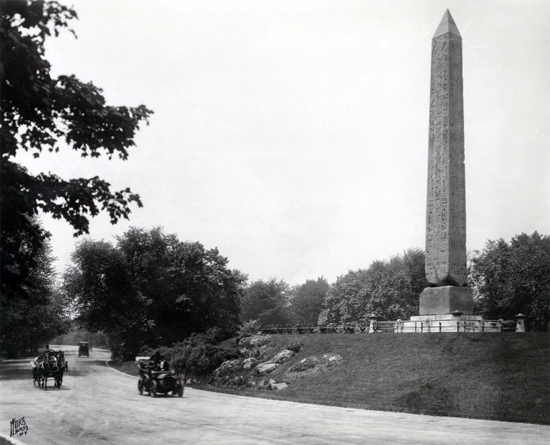
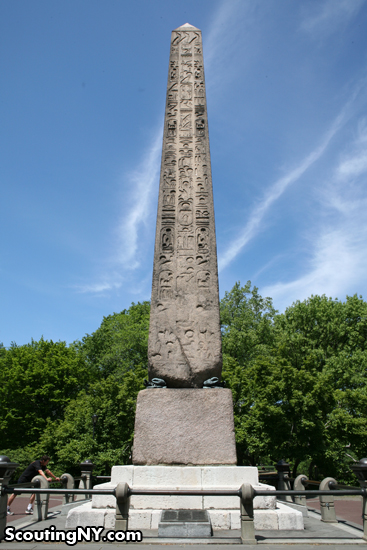

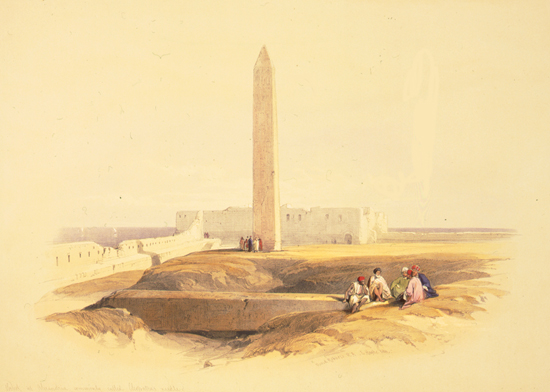
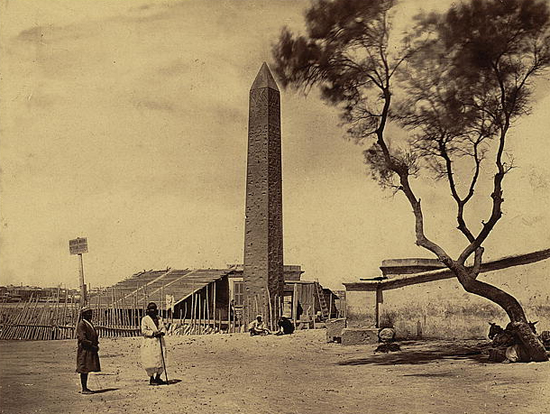




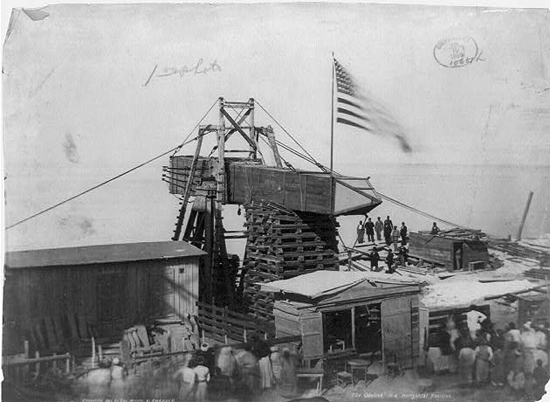


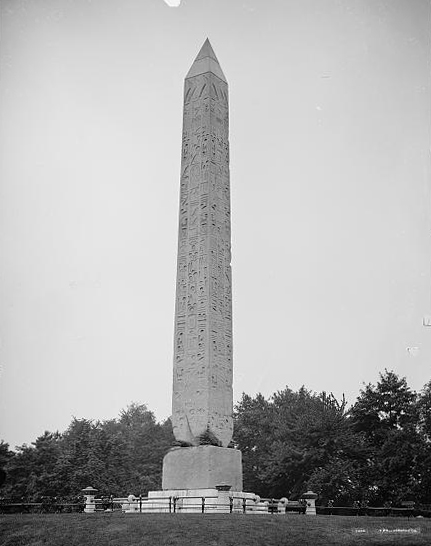
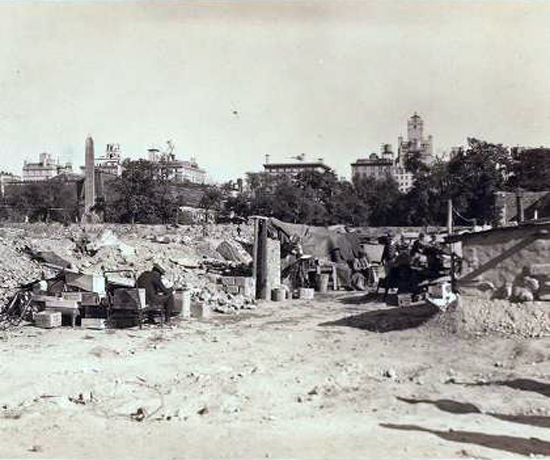
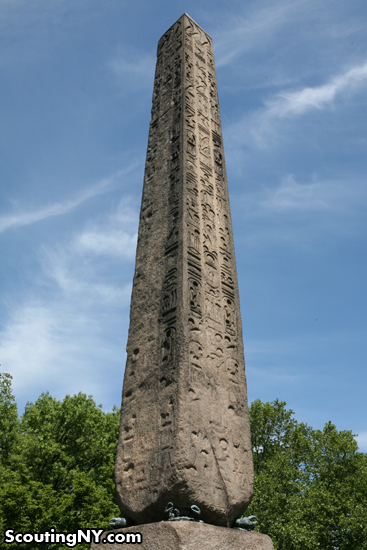

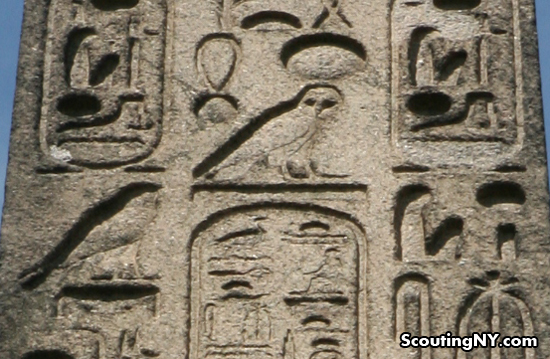

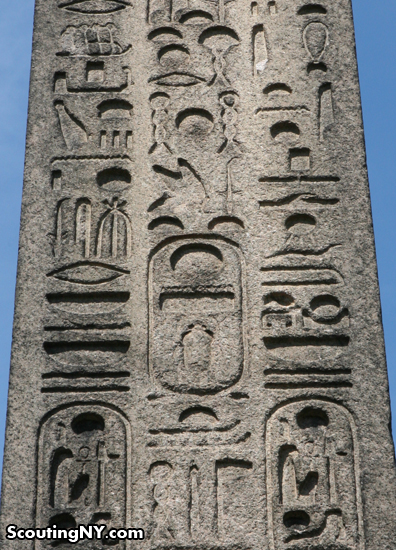

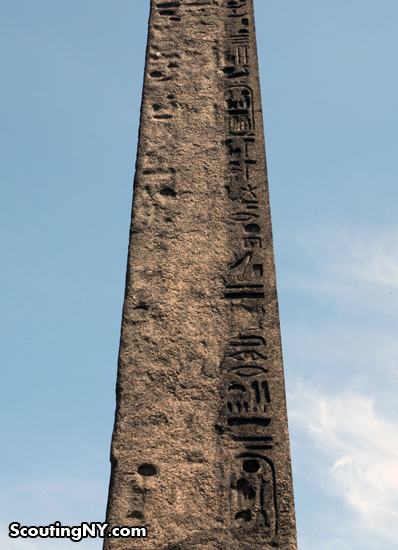

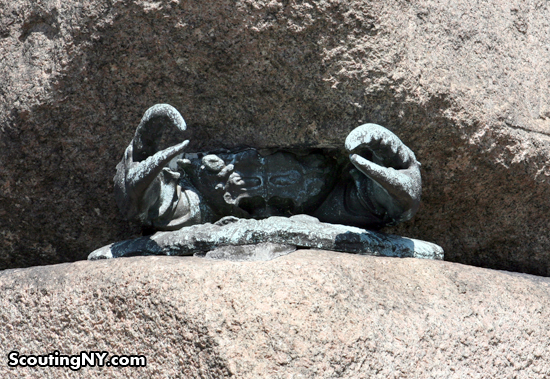
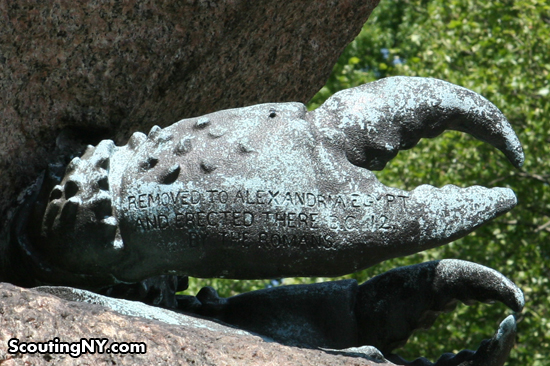




This is amazing. I was born and raised in NYC and had no idea this existed.
It’s a very cool thing to see in the middle of Central Park. A little bit of controversy, thought – Egyptologist Zahi Hawass has stated that Bloomberg either have the obelisk better conserved or he will take steps to have it returned to Egypt. http://www.thedailynewsegypt.com/archaeology/hawass-threatens-to-take-cleopatras-needle-out-of-nyc.html
I’m not sure, but I think I read somewhere that there is a time-capsule buried beneath or near Cleopatra’s needle. I’d like to know if this is true.
From the Official Central Park Website:
A time capsule was buried beneath the Obelisk and included an 1870 U.S. census, the Bible, Webster’s Dictionary, the complete works of Shakespeare, a guide to Egypt and a facsimile of the Declaration of Independence. A small box was placed in the capsule by the man who orchestrated the purchase and transportation of the Obelisk. He will probably be the only person in history to ever know its contents.
this is such a wonderful story and I am so proud that somewhere in our heritage we have honored this wonderful gift. i truely hope that we will have the foresight to mantain this voice of our past.
Pretty cool stuff Nick. Is the book in galleys yet? There has to be a book in here somewhere.
Yes agree is should be preserved, but it should also be sent back to Egypt where it will probably last longer with the lack of acid rain and the levels of pollution that NY has.
Only if it is outside one of the urban areas. Cairo is one nasty city. Not much anti-pollution regulation there.
London’s Cleopatra’s Needle hasn’t toppled! It stands on the Embankment right beside the Thames. Nice to know it’s got a sister in NYC. Shouldn’t they both be back in Egypt where they belong?
London’s needle toppled hundreds of years ago and was buried in the sand. In David Robert’s painting, you can see it laying down half covered in the foreground.
New York’s needle as ALWAYS been standing.
The most interesting thing about the carvings and 3-d drawings is that they are existential and need no explanation.
no it should stay in NYC, it was given to us.
I like these pictures and the captions that you have created for them. I want to add a few observations. The obelisk was erected in Central Park on January 22, 1881. I think the date February 22, 1881, which you provide, marks the opening to the public.
One of your pictures is a drawing by David Roberts. You think it is “a slightly fanciful rendering.” I do not agree. David Roberts was a very meticulous artist, and he was very careful with the details. If you look at his paintings from Petra in Jordan and compare them with modern photos, you will find that his renderings are surprisingly accurate.
Thutmose III erected the obelisks in Heliopolis and he had them inscribed ca. 1450 BC. Ramesses II added more inscriptions ca. 1250 BC (not “hundreds of years later,” as you say).
There is a small book about the Greek and Latin inscriptions on the claws of the sea crabs which support the obelisk. It is written by Augustus Chapman Merriam (1843-1895) and it was published in 1883 (it was reprinted in 2010 and 2012). It is also available online.
Thank you for posting these old and new pictures about the obelisk in Central Park.
Torben Retboll
Bangkok
Thailand
Cleopatra’s Needle is a part of Central park’s cultural diversity. It belongs to the park and I hope the Central park conservancy will take a good care of this piece of art.
Isn’t that what makes Central park so famous – the various cultures, monuments and history implemented in it?
I’m really impressed with your writing skills as well as with the layout on your weblog. Is this a paid theme or did you customize it yourself? Anyway keep up the nice quality writing, it’s rare to see a nice blog
like this one nowadays.
My grandfather often said he once sat on the tip of Cleopatra’s Needle. A trick of terms because he reportedly sat on it while it lay prostrate during construction of its foundation. Not sure if it is true, but until you prove me wrong I’ll continue to tell the story when showing the obelisk to visitors.